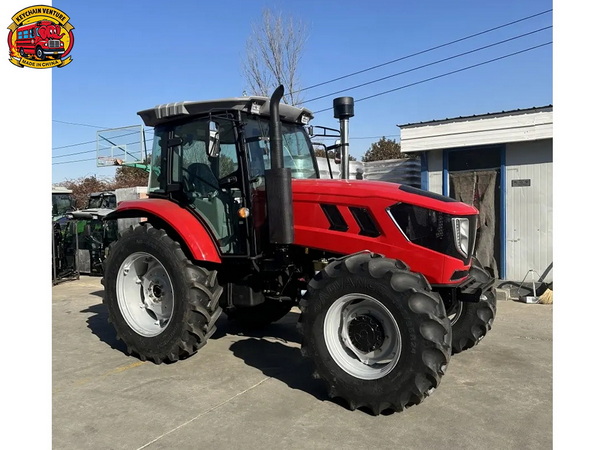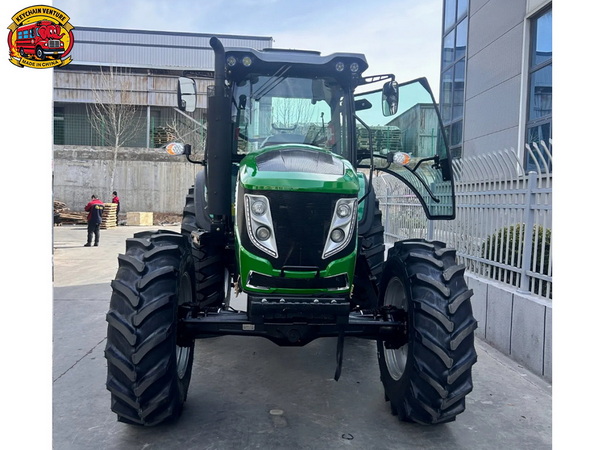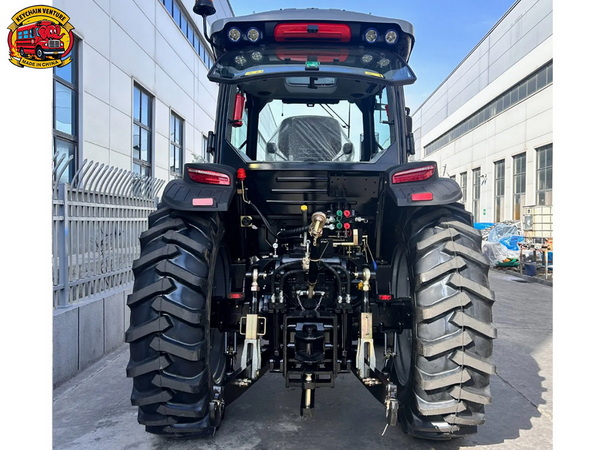







Content Menu
● Understanding Tractor Transportation
>> Why Professional Tractor Transport Matters
● Preparing Your Tractor for Transport
>> Steps to Prepare the Tractor
● Choosing the Right Transport Method for Your Tractor
>> Self-Driving Over Short Distances
>> Specialized Equipment Transport
● Securing the Tractor During Transportation
● Legal Requirements and Permits for Tractor Transport
>> Compliance with Weight Limits
● Safety Tips for Transporting Tractors
● Cost Factors in Tractor Transport
● Common Challenges in Tractor Transport and How to Overcome Them
● Benefits of Expert Tractor Transport Services
● FAQ About Transporting Tractors
>> 1. What is the best way to load a tractor onto a trailer?
>> 2. Do I need special permits for tractor transport?
>> 3. Can I drive the tractor to the destination instead of transporting it?
>> 4. How do I avoid damage during transport?
>> 5. How long does it take to transport a tractor?
Transporting a tractor efficiently and safely is essential for agricultural businesses, construction companies, and equipment rental services. Given the size, weight, and value of tractors, proper planning and execution are key. This comprehensive guide covers everything you need to know about how to transport a tractor, including preparation, available transport methods, regulations, safety tips, and costs involved.

Tractors are robust and heavy-duty machines engineered for tough jobs. Moving them from farms, factories, or construction sites to other locations requires more than just driving. These vehicles often cannot be driven long distances on public roads due to safety concerns, size restrictions, and road laws. Therefore, specialized transportation techniques and equipment are used to ensure that tractors arrive without damage or legal issues.
Incorrectly transporting a tractor can lead to mechanical issues, road accidents, or hefty fines. Professional transport companies have the expertise, equipment, and permits to handle these challenges. Whether it is moving a small tractor or a large agricultural behemoth, understanding the process minimizes risks and protects your investment.
Before moving the tractor, thorough preparation is necessary to ensure safe handling and compliance with regulations.
1. Clean the Tractor: Remove dirt, mud, and debris from the tractor, especially from tires and undercarriage, to prevent debris falling off during transit.
2. Inspect for Damage: Check the tractor for any existing damage documented in photos to avoid disputes post-transport.
3. Secure Loose Parts: Remove or securely fasten any loose components, such as tools, attachments, or accessories.
4. Check Fluid Levels: Drain or secure any fluid tanks to prevent spills, particularly fuel, oil, and coolant. Some regions require fuel tanks to be less than a quarter full during transport.
5. Disable Alarms and Batteries: Turn off alarms and disconnect the battery to prevent battery drainage or false alarms during transport.
6. Fold or Remove Attachments: If the tractor has wide implements like plows or arms, fold them in or remove if possible to reduce width.
Various ways exist to transport tractors, depending on size, distance, and budget.
Flatbed trucks are the most common choice. The tractor is loaded onto a flat trailer using ramps or cranes. Flatbeds accommodate most tractor sizes and allow for easy loading and unloading. The flatbed must be rated for the weight of the tractor and equipped with proper securing points.
Lowboy trailers have a lower deck height, enabling the transport of tall or heavy tractors within legal height limits on highways. These trailers are ideal for heavy-duty tractors or those with tall cabs or attachments.
For high-value or delicate tractors, enclosed trailers provide protection from weather and road debris during transit. This method is more expensive but offers maximum protection.
On-site or short-distance moves sometimes allow tractors to be driven themselves on suitable terrain, but this is rare for long distances or public roads due to licensing and safety regulations.
Some large or historic tractors might require specialized carriers, such as axle trailers or multi-axle platforms, to distribute weight and comply with road limits.
Proper securing methods are crucial to avoid accidents or damage.
- Use heavy-duty ratchet straps rated for tractor weight.
- Secure the tractor at multiple points including axles, frame, and designated tie-down locations.
- Avoid straps on hydraulic lines or delicate parts.
- Ensure straps are tight and avoid slack, but do not overtighten to the point of damaging components.
- Use wheel chocks in front and behind the tires to prevent any rolling during transport.
- Use safety chains where possible as backup securing devices.
- Check all securing hardware before departure and during transport stops.

Transporting tractors across states or countries requires awareness of legal requirements.
- Tractors exceeding width (usually over 8.5 feet), height, or weight limits require oversize load permits.
- Permit rules vary by region; contact local transportation authorities in advance.
- Applications may require route surveys, especially for longer or more complex transports.
- Large tractor transports might need escort vehicles to warn other drivers, especially when traveling on narrow roads or crossing bridges.
- Ensure the trailer and truck comply with licensing weight limits.
- Overweight loads may require specific routes to avoid weak bridges or roads.
- Some states or countries require multi-axle trailers to distribute weight evenly.
- Verify the carrier's insurance and licensing before scheduling transport.
- Use reflective signage and lighting on trailers, especially for oversize loads.
- Inform local transportation authorities if needed to avoid fines.
- Drive at safe speeds, especially on curves and hills.
- Regularly inspect the tractor and straps during transport stops.
- Avoid transporting in bad weather conditions.
- Maintain communication during the transport process with your carrier.
- Inform them about any unusual features of the tractor that may impact handling.
The cost varies by several factors:
- Distance of transport.
- Tractor size and weight.
- Choice of transport method.
- Need for permits or escort vehicles.
- Insurance coverage requirements.
- Seasonal demand and route complexity.
On average, transporting a tractor can range from a few hundred to several thousand dollars based on these factors.
- Schedule transport during off-peak seasons.
- Bundle multiple tractor transports if possible.
- Prepare the tractor adequately to avoid delays or damage that can increase costs.
Proper securing and weight distribution are necessary to prevent tipping or shifting during transport.
Plan routes ahead to avoid low bridges, weight-restricted roads, and traffic congestion.
Bad weather can cause delays and increase risk; check forecasts and adjust schedules accordingly.
- Specialized equipment and expertise.
- Reduced risk of mechanical damage.
- Compliance with all regulations.
- Peace of mind and time savings.
- Insurance coverage protects investment.
Hiring professional services that specialize in tractor transport guarantees a smoother, safer, and more reliable experience.
Transporting a tractor requires careful planning, preparation, and the right choice of transport methods to ensure safety and regulatory compliance. By following best practices—including cleaning and securing the tractor, selecting appropriate trailers like flatbeds or lowboys, obtaining necessary permits, and adhering to safety guidelines—you can protect your investment and avoid costly delays or accidents. Whether moving a small or large tractor, professional help or thorough personal preparation is essential to smooth transport.

Load the tractor using sturdy ramps or cranes on a stable, flat surface. Ensure multiple secured tie-down points once the tractor is on the trailer.
If the tractor exceeds standard road size or weight limits, oversize or overweight permits are required. Rules differ by location.
This is only practical for short distances on suitable terrain. For longer or public road trips, professional transport is safer and often mandatory.
Secure the tractor firmly with ratchet straps, chock wheels, remove or lock loose parts, and choose the right trailer.
Transport time depends on distance, route complexity, and permit processing. Local moves are faster, long-distance shipments may take days.